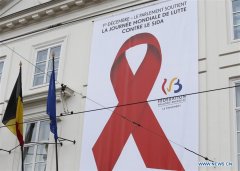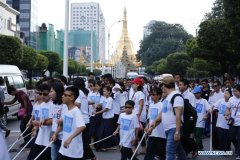Cost of treating skin cancer in Australia soars to 158 million USD per year
SYDNEY, Aug. 29 (Xinhua) -- The financial cost of melanoma treatment in Australia has soared to more than 200 million Australian dollars (158.52 million U.S. dollars) per year, according to a new research released on Tuesday.
The Queensland Institute of Medical Research Berghofer (QIMR) found that even though sun cancer is easily preventable, the cost of treating and diagnosing melanoma, the most serious form of sun cancer, has swelled from 30 million Australian dollars (24 million dollars) in 2001, to 201 million Australian dollars (159 million dollars) in 2017.
The northern Australian state of Queensland shouldered the heaviest economic burden, with the highest rates of melanoma in Australia, and accounted for around a quarter of the total national cost of treatment and diagnosis.
By providing a clear illustration of the ballooning cost of treatment, Health economist Louisa Gordon who led the research, hoped the government will see the need for a national prevention strategy as it has significant impact on the national economy.
"We need to constantly be reminding the public to be sun safe, even if people do know what they should be doing, we tend to get complacent," Gordon told Xinhua on Tuesday.
"In Australia and New Zealand, we spend more per capita than anywhere else in the world on treating and diagnosing melanoma, it is a serious disease."
According to the Australian Bureau of Statistics, roughly 1,800 Australians die from melanoma each year, and Gordon said these deaths are especially tragic, considering the dominant cause is from ultraviolet (UV) radiation, which is easily mitigated.
Gordon harkened back to the popular "slip, slop, slap campaign," a widescale prevention initiative introduced in Australia back in 1981, and encouraged Australians to slip on a shirt, slop on some sunscreen, and slap on a hat to stay safe while enjoying the often-blistering Australian sun.
The campaign was widely regarded as one of the most successful Australian health campaigns ever devised, and Gordon said a similar initiative is now needed to further educate the public.
"These campaigns are well worth the investment. The fruits of this labor don't appear for some time, but the cost of the campaign is far less than the amount spent every year on diagnosis and treatment," Gordon said.
"We've got different populations, and people from a variety of backgrounds, and the message has to be clear and something that can stick at the front of everyone's minds."
Gordon said urgent action is needed to combat this growing problem, and urged not only the Australian government, but also the general public to take action.
"With the compounding effects of health price inflation, the increased uptake of expensive new medicines, and the growing ageing demographic, it's likely the cost of skin cancer will only rise further in the future," Gordon said.
"Melanoma is just the tip of the iceberg, there are many skin cancers caused by UV rays and the public needs to be aware of how to prevent them."















